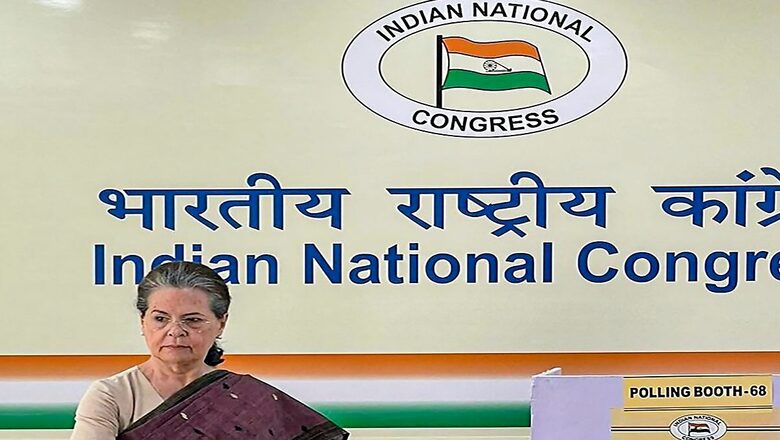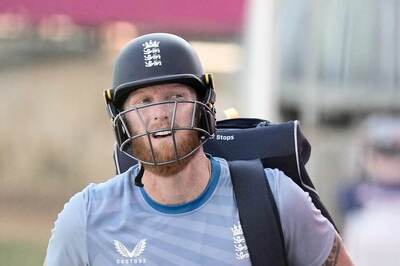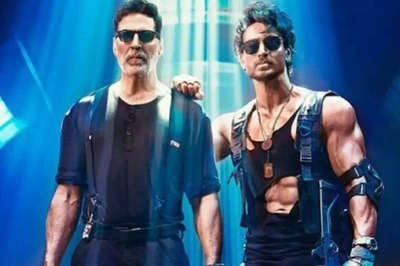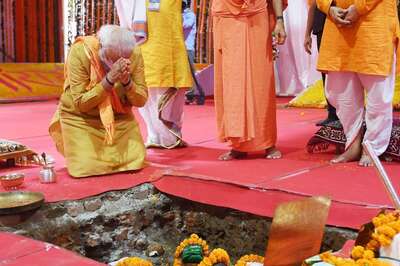
views
Twenty-five years ago, the month of March played a significant role in the life of Sonia Gandhi as well as the Congress party. A politician among the politicians emerged, who played a foremost role in the grand old party, giving it back-to-back victories but saddling the Congress with perpetual dynasty or ownership of the party by the family.
A quarter of a century later, the significant events of March 1998 or a Constitutional coup have a particular relevance to the Congress party. While Sonia may have been a beneficiary of oust Sitaram Kesri campaign, the drive to remove an elected All India Congress Committee (AICC) president was orchestrated virtually by the party’s who’s who, notably Pranab Mukherjee, Jitendra Prasada, Sharad Pawar, Ghulam Nabi Azad, Arjun Singh, AK Antony, Madhavrao Scindia, Rajesh Pilot, Vijaya Bhaskara Reddy, Manmohan Singh, Meira Kumar, Oscar Fernandes, Madhavsinh Solanki, JB Patnaik and Lalthanhawla. Most of these eminent Congress leaders died disillusioned with Sonia, while some of the living characters such as Azad and Pawar are no longer with the Congress.
The stage for Sonia’s entry was set after the Congress’ defeat in the 1996 general elections. In December 1997, Sonia indicated her willingness to play a more active role in politics. It was Priyanka and Rahul Gandhi who had supposedly helped their mother make up her mind. The family was convinced that it had to fight the Bharatiya Janata Party (BJP), which, they believed, was bent upon destroying whatever good had been achieved from the Nehru era to Rajiv’s rule. Contrary to popular belief, it was Rahul’s persuasion that influenced Sonia more than Priyanka’s. Rahul had offered to quit his job in London as a consultant at Monitor Deloitte Group, to help her. This was a gesture that moved Sonia deeply.
On December 28, 1997, Sonia went public about her intention to join politics. The choice of the day — December 28 — was not without significance. It was the 112th anniversary of the founding of the Indian National Congress. On January 11, 1998, Sonia addressed her first rally at Sriperumbudur, Tamil Nadu, where Rajiv was assassinated. Sonia went on to address 130-odd meetings during a back-breaking campaign but the outcome of the elections to the 12th Lok Sabha came as a shock. The party’s final tally was only 142 seats. Her managers were quick to blame Congress president Kesri, who had not stepped out of his house, and said the party had failed to cash in on Sonia’s charisma because of organisational weaknesses. Sonia accepted the argument and agreed to take direct control of the party, insisting that Kesri step down gracefully and invite her to take over. But ‘Chacha’ — as Kesri was called — was in no mood to oblige.
On March 9, 1998, Kesri announced his resignation but changed his mind within minutes. Kesri claimed he had merely stated his intention to step down, although all major newspapers had quoted him as saying he had resigned. Finally, senior Congress leaders forced him to step down.
On March 13, Prasada hosted a lunch where 13 of the 17 Congress Working Committee (CWC) members signed Kesri’s political death warrant. Ahmed Patel, Prasada, Mukherjee, R.K. Dhawan, Arjun, Azad, Sharad Pawar, Vijaya Bhaskara Reddy, Antony, Manmohan, Meira Kumar, Oscar Fernandes and Madhavsinh Solanki signed the ultimatum to Kesri. J.B. Patnaik and Lalthanhawla later approved it. On March 14, 1998, Sonia formally assumed charge as party president. It would be the beginning of a new chapter for the girl from Orbassano who had once been vehemently opposed to her husband joining politics. The day was momentous as the Congress’ 24 Akbar Road headquarters turned a mute witness to a coup that saw the rather unsavoury exit of an “elected” Congress president and the appointment of Sonia as party chief.
Kesri, then in his 79th year, had arrived at the CWC meeting, convinced that a party president could not be forced out. He did not know that before the 11 am meeting, most CWC members had gathered at Pranab Mukherjee’s house to endorse two crucial statements. The first was an ultimatum asking Kesri to step down; the second, a resolution replacing him with Sonia. The moment Kesri stepped into the hall, he knew something was amiss. Loyalist Tariq Anwar was the only one who stood up to greet him. After Kesri sat down, Mukherjee began reading out a resolution “thanking” him for his services. The March 14 resolution mentioned Kesri’s March 9 announcement and said the “confusion and state of uncertainty” had brought “organisational work to a standstill.” A horrified Kesri shouted, “Arre yeh kya keh rahe ho (What are you saying)”, but there was a smirk on the faces of his colleagues. Kesri raved against the “unconstitutional” meeting and stormed out, followed by loyalist Anwar. As he was getting into his car, he was heckled, and some Youth Congress workers even tried to pull down his dhoti. By the time Kesri exited 24 Akbar Road, the nameplate outside what used to be his room had already been replaced with a computer printout that read- “Congress President Sonia Gandhi.”
When Kesri reached his Purana Qila residence, he was in no mood for his favourite Pomeranian Ruchi’s joyous welcome. Eyewitnesses, however, recalled that the moment he kicked her, Kesri was overcome with remorse. The finest of biscuits — presented to Kesri during his tenure — were offered to the puzzled Ruchi.
Arriving journalists found the Congress veteran calmer. He bad-mouthed Mukherjee, Jitendra Prasada and Arjun Singh but the ingrained reverence for the “family” prevented him from attacking Sonia. Kesri later told this writer he was hoping for “correction” from Sonia after his ouster. When the new party chief arrived a few hours later to comfort him, Kesri rushed to greet her. Sonia sought Kesri’s blessings and guidance and the old man puffed up with pleasure. By 7 pm, he was singing paeans to the Nehru-Gandhis while promising to get even with Mukherjee, Prasada and Arjun Singh.
During the two-and-a-half-years more that he lived, Kesri would often say- “Congress leadership tapte hue suraj ke saman hai. Bahut pas jaoge to jal jaoge aur bahut door rahoge to thand se mar jaoge (The Congress leadership is like the blazing sun. Get too close and you will be burnt, stay too far and you will freeze to death).”
The freedom fighter and former Union minister died a disturbed and disillusioned man and never reconciled to his unceremonious ouster. There was much that he wanted to say but he suffered an asthma attack and then slipped into a coma. Incidentally, the euphoria over Sonia’s formal entry into the Congress in 1998 was so high that many leaders, including CWC members, felt that the party was within striking distance of power. The Assembly poll results in Madhya Pradesh, Rajasthan and Delhi reinforced that belief. By December 1998, Sonia was ahead of even Atal Bihari Vajpayee as the choice for the prime minister in a survey conducted by India Today. The 2004 Lok Sabha verdict confirmed it too.
The writer is a Visiting Fellow at the Observer Research Foundation. A well-known political analyst, he has written several books, including ‘24 Akbar Road’ and ‘Sonia: A Biography’. Views expressed are personal.
Read all the Latest Opinions here




















Comments
0 comment